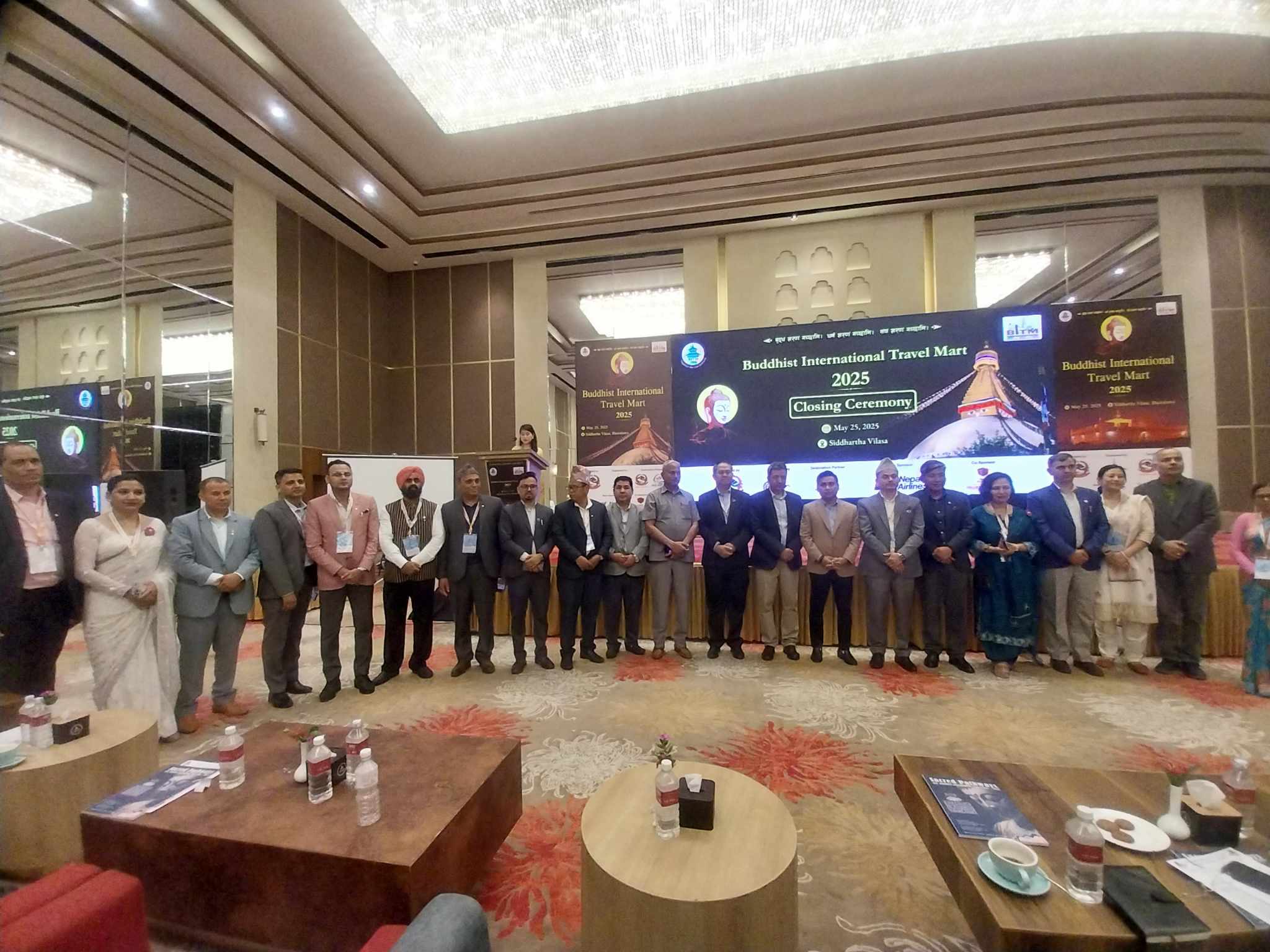The recently concluded Buddhist International Travel Mart (BITM), organized by the Nepal Tourism Board in collaboration with the Nepal Association of Tour and Travel Agents (NATTA), has laid a significant emphasis on promoting Buddhist tourism with a central focus on Lumbini, the birthplace of Lord Buddha. The three-day event, which started in Kathmandu and concluded with a special ceremony in Lumbini, aimed at fostering regional cooperation among Buddhist-majority countries and enhancing Nepal’s positioning in the global religious tourism market.
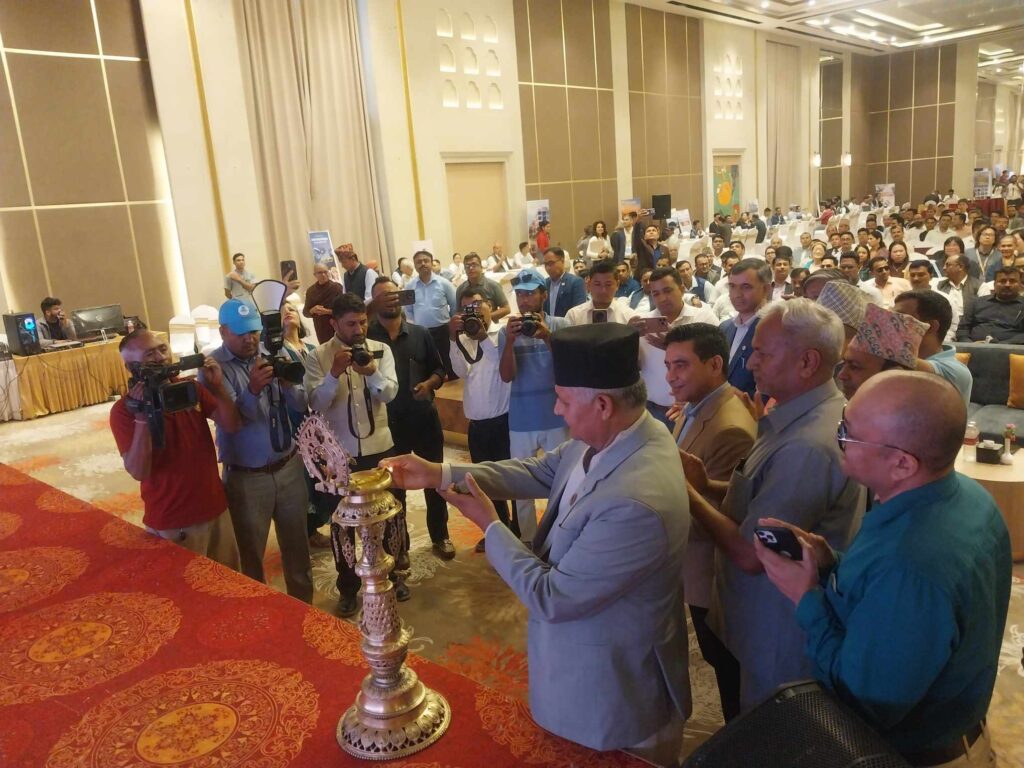
BITM Concludes in Lumbini Amid Strong International Participation
The Buddhist International Travel Mart, which commenced in Kathmandu on Friday, officially concluded on Sunday with a grand ceremony held in Lumbini. The event brought together tourism entrepreneurs, Buddhist monks, scholars, and government representatives from countries such as India, Myanmar, Bhutan, Sri Lanka, Thailand, China, and Japan. The main goal was to strengthen mutual cooperation in Buddhist tourism and to position Nepal, particularly Lumbini, as a pivotal destination for pilgrims and spiritual travelers from across the globe.
According to the Nepal Tourism Board, this international platform served as a gateway to promote Buddhist heritage sites in Nepal, facilitate collaboration among stakeholders, and elevate the quality and scope of Buddhist tourism across South and Southeast Asia.
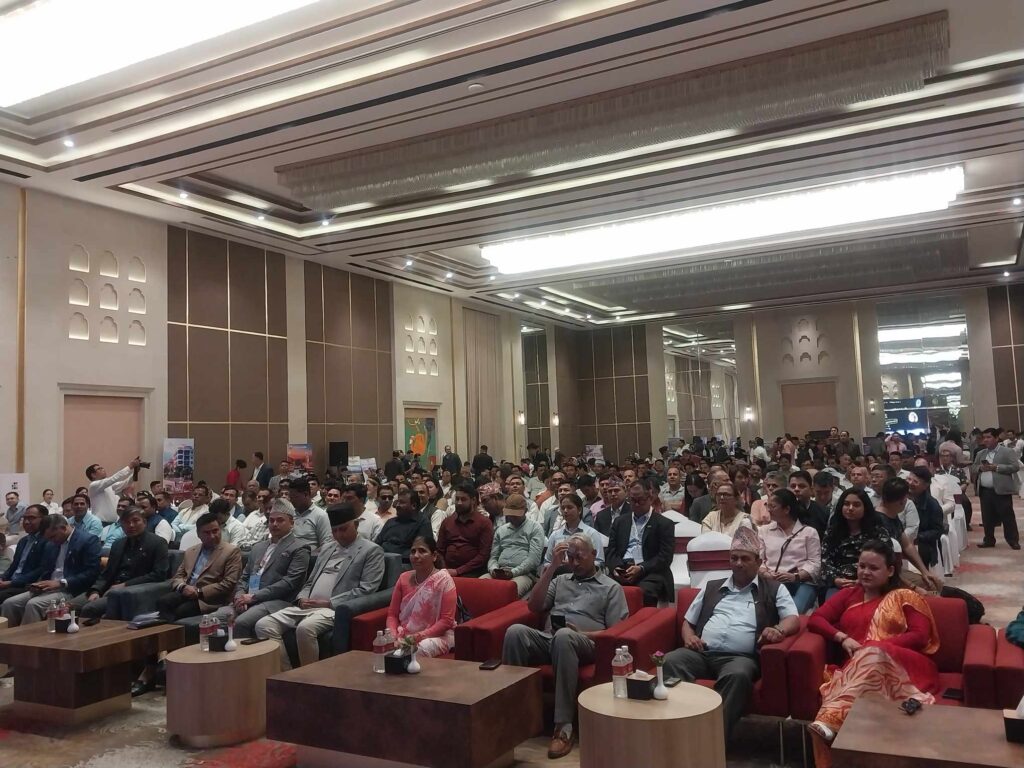
Lumbini Province Government Commits to Expanding Buddhist Tourism
At the closing ceremony held in Lumbini, Chet Narayan Acharya, Chief Minister of Lumbini Province, highlighted the provincial government’s proactive efforts to expand tourism and boost the regional economy through strategic initiatives. He emphasized that the government is committed to making Lumbini a globally recognized spiritual hub by investing in infrastructure, promoting traditional attire and culture, and developing the “Buddha Circuit.”
“We are dedicated to contributing to the province’s economic development by promoting tourism and making Lumbini known across the world,” said Acharya. He added that the government has prioritized several key projects, including the construction of major roads, development of multilingual digital information boards at airports and transport hubs, and promotion of the Kaligandaki Corridor.
“The development of the Buddha Circuit is not just an idea but a committed goal of the Lumbini Province Government,” he further stated.
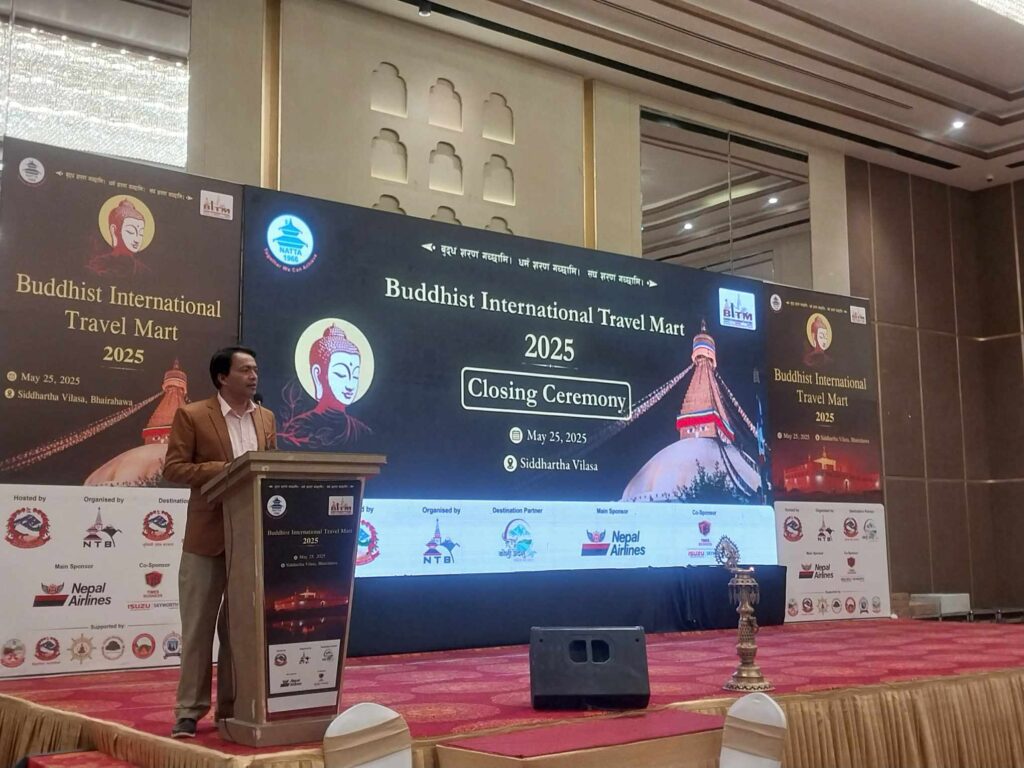
Focus on Public-Private Partnerships and Sustainable Growth
Prachanda Bikram Neupane, Minister of Industry, Tourism, and Transport for Lumbini Province, also addressed the closing ceremony and reiterated that Lumbini holds historical, cultural, and spiritual significance. He emphasized the necessity of leveraging this status to create an economically prosperous province.
“We need to focus more on promotion and extend the stay of tourists,” said Minister Neupane. “To achieve this, the government is working in partnership with the private sector.” He pointed out that regular flight operations at Lumbini International Airport are critical and that efforts are underway to establish direct connections with Buddhist-majority countries to ease accessibility for pilgrims and tourists alike.
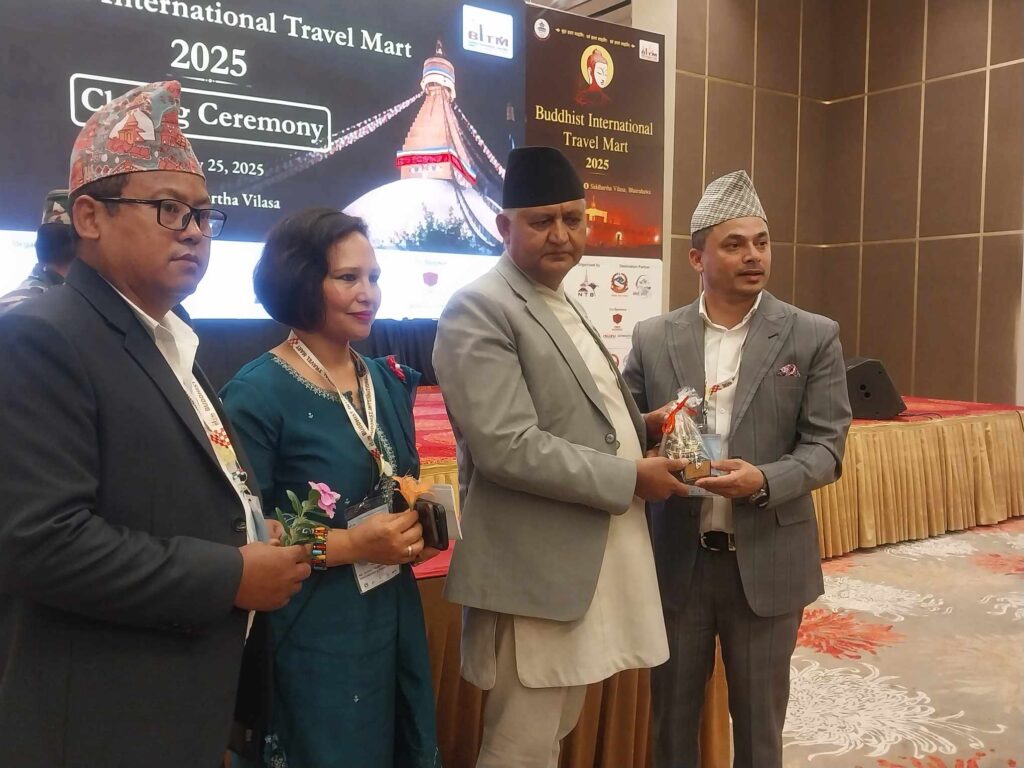
Strengthening Regional Cooperation Through Agreements
BITM also served as a venue for establishing and reinforcing regional cooperation. Kumar Mani Thapaliya, President of NATTA, remarked that the event was not just a platform to promote tourism businesses but also a historic opportunity to build international partnerships.
“During the opening ceremony in Kathmandu, we signed a memorandum of understanding (MoU) with the Travel and Tour Operators Association of India,” Thapaliya said. “And today, we successfully reached another agreement with the Myanmar Travel Association. These partnerships will lay a strong foundation for long-term regional collaboration.”
Thapaliya also highlighted the significance of the Chinese Route 318, which connects directly with Lumbini, further opening up possibilities for Buddhist tourism along ancient pilgrimage routes.
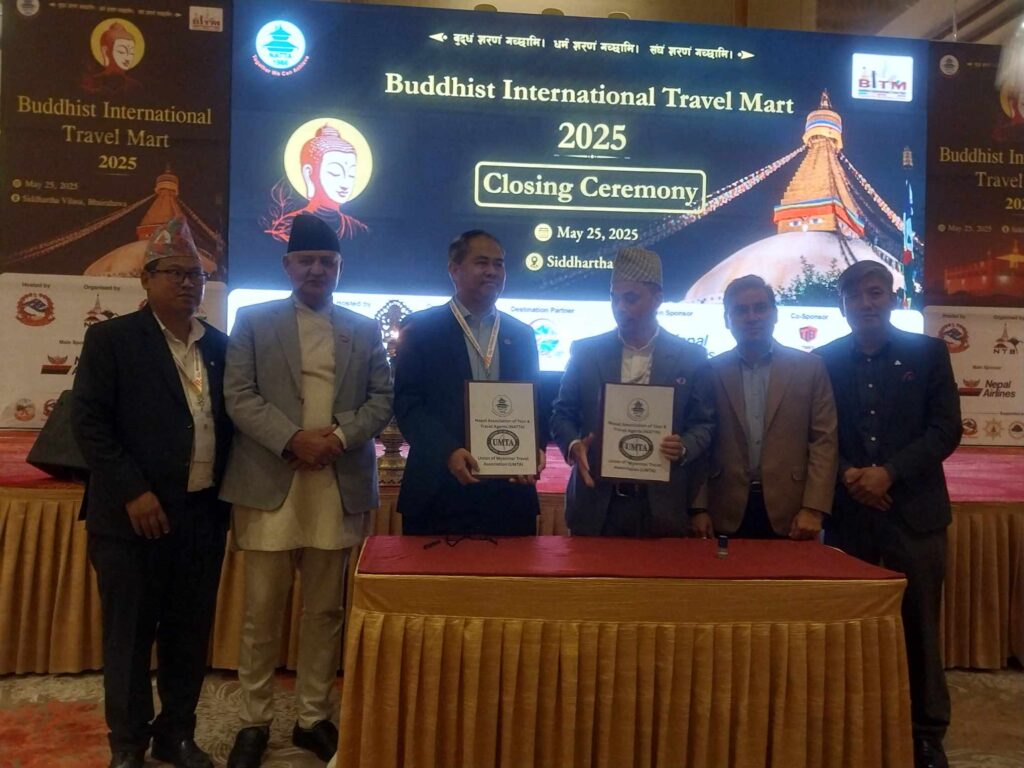
Myanmar Delegation Expresses Optimism for Future Cooperation
Among the international delegates, Kyaw Bohne Naing, President of the Myanmar Travel Association, expressed great enthusiasm for participating in the event. “It has been a truly inspiring experience,” he shared. “We want to walk this path together, to promote Buddhism and tourism hand in hand.”
Naing expressed confidence that religious tourism cooperation between Nepal and Myanmar will grow stronger in the future. He commended Nepal’s efforts in preserving Buddhist heritage and fostering spiritual connections between nations that share Buddhist cultural values.
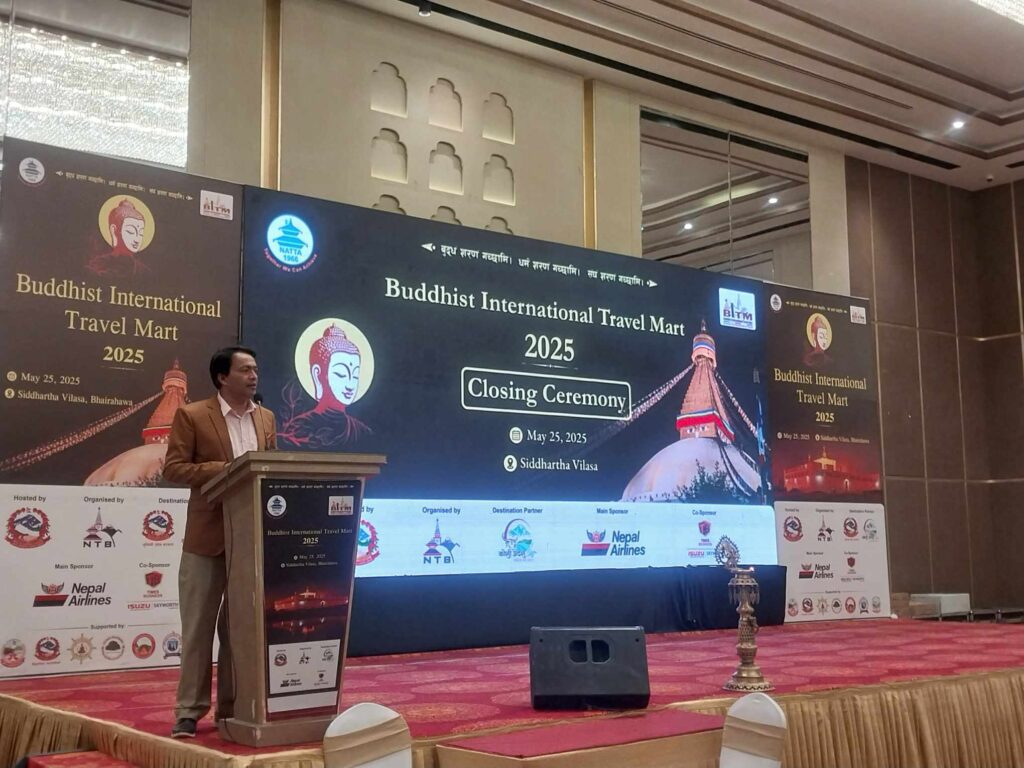
A Platform for Cultural Exchange and Tourism Development
The Buddhist International Travel Mart succeeded in bringing together diverse stakeholders from both the public and private sectors, fostering opportunities for cultural exchange, business networking, and collaboration. According to the Nepal Tourism Board, the event has made a substantial contribution to improving the quality of Nepal’s tourism offerings, expanding cultural relations, and strengthening international partnerships.
By hosting this international mart, Nepal has not only taken a step toward revitalizing its tourism industry post-COVID but also reaffirmed its role as a key spiritual and cultural destination for Buddhist pilgrims around the world.
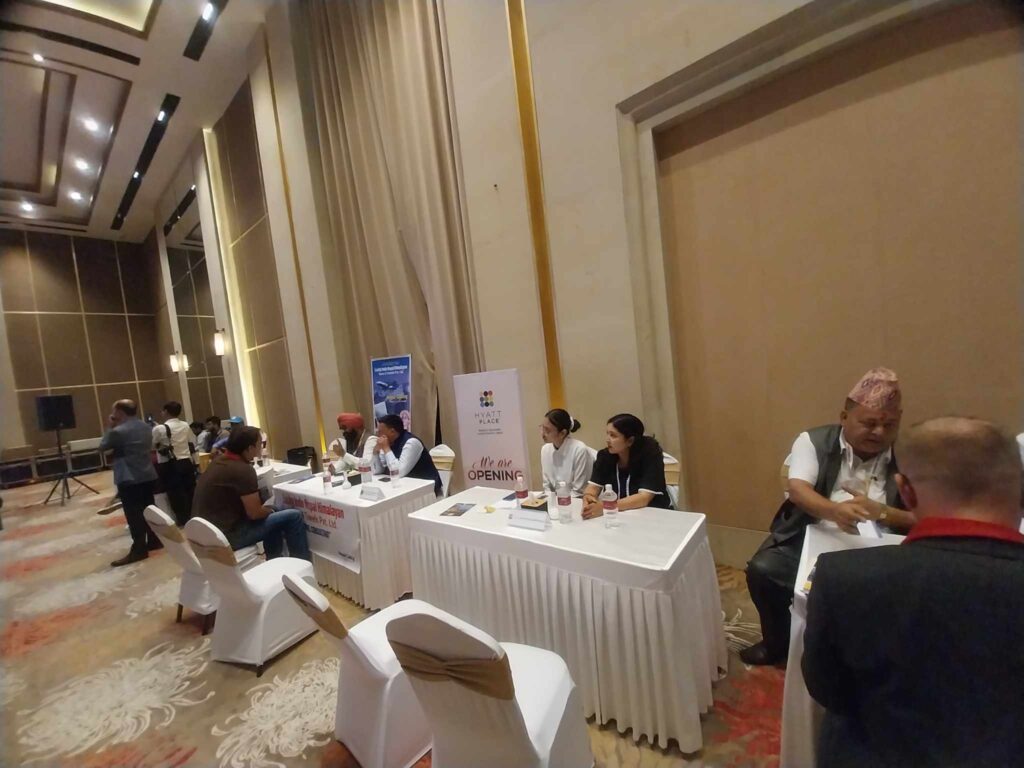
Looking Ahead: Sustainable and Inclusive Buddhist Tourism
The successful execution of BITM marks a significant milestone in Nepal’s efforts to promote sustainable and inclusive tourism. With government commitment, regional partnerships, and growing interest from Buddhist-majority countries, Lumbini is set to emerge as a cornerstone of international Buddhist pilgrimage tourism.
As Nepal continues to invest in infrastructure, digital innovation, and policy reforms in the tourism sector, events like BITM pave the way for long-term gains, not only economically but also diplomatically and culturally.
The Buddhist International Travel Mart has proven to be more than just a tourism promotion event, it has become a symbol of unity among Buddhist nations, a platform for intercultural dialogue, and a beacon of hope for spiritual and economic rejuvenation in Nepal. With Lumbini at the heart of these efforts, Nepal is positioning itself as a global leader in Buddhist tourism for years to come.
